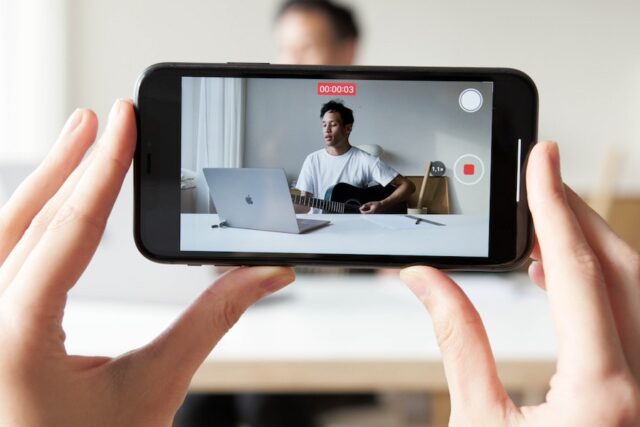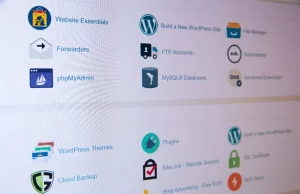Explainer videos have become a ubiquitous presence in our digital landscape. From business websites to social media platforms, these short, engaging videos are everywhere, simplifying complex ideas and capturing our attention. But have you ever wondered why some explainer videos are more effective than others? What makes us watch, engage, and remember specific videos while quickly forgetting others? The answer lies in the psychology behind compelling explainer videos. For expert insights and impactful video solutions, visit CRFT Video.
The Power Of Visual Communication
The Primacy of Visuals
Visual communication is a fundamental aspect of human interaction. Research shows that our brains process visual information much faster than text, and we retain it better. Explainer videos leverage this inherent preference for visuals, making them an ideal medium for conveying information.
The Impact of Imagery
Explainer videos often rely on visuals, text, and audio. The use of imagery is compelling. When we see images or animations that complement the spoken or written content, our brains create connections, reinforcing the message. This multimedia approach makes information more engaging and easier to understand.
Emotional Engagement
One of the most significant advantages of explainer videos is their ability to compel emotions. Effective videos use visuals, music, and storytelling techniques to connect emotionally with the audience. Whether it’s humor, empathy, excitement, or curiosity, emotions play a crucial role in retaining information.
The Cognitive Load Theory
Simplifying Complex Ideas
Explainer videos excel at simplifying complex ideas. The cognitive load theory, a psychological concept, suggests that our working memory can only handle a limited amount of information simultaneously. When data is presented in a clear, structured, and visually appealing, it reduces cognitive load, making it easier for viewers to process and retain the information.
Chunking Information
Compelling explainer videos use chunking” to break down information into small, digestible chunks. This aligns with how our brains naturally process information in inforVideos prevent cognitive overload buttons by presenting information sequentially and overloading and helping viewers follow the narrative.
The Role of Storytelling
Narrative Engagement
Storytelling is a powerful tool in explainer viewers become emotionally invested in the story when information is presented as a narrative. During engaging narratives, the brain releases oxytocin, a hormone associated with trust and bonding. This emotional response enhances the viewer’s connection with the content.
The Curiosity Gap
Compelling storytelling often incorporates the “curiosity gap” technique. This involves introducing a question or problem at the beginning of the video and gradually revealing the answer or solution. Viewers are naturally curious; this technique keeps them engaged as they seek answers throughout the video.
The Role of Audio
The Impact of Voiceovers
Voiceovers are a critical component of explainer videos. The narrator’s voice’s tone, pace, and intonation can significantly impact viewer engagement. A pleasant and relatable voice can create a sense of trust and connection, enhancing the viewing experience.
Music and Sound Effects
Music and sound effects contribute to the emotional tone of the video. They can evoke specific feelings: excitement, nostalgia, or serenity. The strategic use of audio elements enhances the viewer’s passionate engagement with the content.
The Attention Span Factor
Short and Sweet
In the digital age, attention spans are notoriously short. Explainer videos recognize this limitation and aim to deliver information quickly and efficiently. Most successful explainer videos are under two minutes long, ensuring that viewers stay engaged from start to finish.
The 8-Second Rule
Research indicates that you have approximately eight seconds to grab a viewer’s attention in a video. This short window is where the “hook” of the tape comes into play. Effective explainer videos start with a compelling hook that entices viewers to continue watching.
The Social Proof Phenomenon
Trust and Validation
Social proof is a psychological phenomenon where people tend to follow the actions of others when they’re uncertain about a decision. In the context of explainer videos, social proof can be established through viewer testimonials, case studies, or statistics. When viewers see that others have found value in the content, they are likelier to engage with it.
The Power of Sharing
Social proof extends to the sharing behavior of viewers. Sharing explainer videos on social media or with their networks is an endorsement. Others are more inclined to watch and engage with content shared by people they trust.
The Mobile-Friendly Advantage
The Rise of Mobile Viewing
As more people consume content on mobile devices, explainer videos are optimized for this platform. Mobile-friendly videos are designed to load quickly, fit various screen sizes, and deliver information efficiently. This accessibility ensures that a broader audience can engage with the content.
The Scrolling Advantage
Mobile viewing often involves scrolling through content. Compelling explainer videos take advantage of this behavior by using captions, subtitles, and visual cues that make it easy for viewers to follow the video, even without sound.
The Role of Emotions in Explainer Videos
Emotional Resonance
Compelling explainer videos can evoke emotions in their viewers. Whether it’s humor, empathy, excitement, or even sadness, emotions play a crucial role in retaining information. When viewers connect emotionally with a video, they are more likely to remember its content.
The Empathy Factor
Explainer videos that tap into the viewer’s empathy are compelling. When a video presents a relatable problem or scenario, viewers are more likely to engage with the content on a personal level. This emotional resonance encourages them to continue watching and absorb the message.
Advanced Storytelling Techniques
The Hero’s Journey
Joseph Campbell’s concept of the Hero’s Journey is a storytelling archetype used for centuries. It involves a hero who adventure, faces and overcomes challenges, and ultimately returns transformed. Many compelling explainer videos follow a simplified version of this structure, with the viewer as the hero seeking a solution.
The 3-Act Structure
Another storytelling technique widely used in explainer videos is the 3-act structure. This format divides the narrative into setup, confrontation, and resolution. It provides a clear, engaging framework that keeps viewers hooked until the end.
The Science of Viewer Engagement
The Viewer’s Journey
Compelling explainer videos take viewers on a journey. They start with an effective hook to grab the viewer’s attention within the first eight seconds. Then, they introduce the problem or question, gradually building tension and curiosity. Finally, they provide a satisfying resolution or answer.
The Power of Anticipation
Anticipation is a psychological phenomenon that can be harnessed in explainer videos. By foreshadowing or hinting at what’s to come, videos can keep viewers engaged as they eagerly await the next piece of information or the resolution of a problem.
Practical Tips for Creating Effective Explainer Videos
Know Your Audience
Understanding your target audience is essential to compelling explainer videos. Research their preferences, pain points, and interests. Tailor your video’s content and style to resonate with your specific audience.
Keep It Concise
One of the hallmarks of compelling explainer videos is their brevity. Keep your video concise and to the point. Aim for under two minutes to ensure viewers stay engaged throughout.
Simplify Complex Concepts
Explainer videos are at their best when they simplify complex concepts. Use clear and straightforward language. Avoid jargon or technical terms that might confuse viewers.
Create an Emotional Connection
Incorporate elements that create an emotional connection with your audience. Whether through storytelling, relatable scenarios, or music choices, evoke emotions that align with your message.
Use Visuals Wisely
Visuals are powerful tools in explainer videos. Use them strategically to complement your message and enhance understanding. Avoid clutter and ensure that visuals reinforce your narrative.
Optimize for Mobile
Optimizing your explainer videos for mobile viewing is crucial as more viewers access content on mobile devices. Ensure your videos load quickly, and use captions or subtitles for accessibility.
Include a Clear Call to Action (CTA)
Every compelling explainer video should conclude with a clear call to action. Whether it’s encouraging viewers to visit your website, subscribe to your newsletter, or make a purchase, guide them on the next steps.
The Future of Explainer Videos: Where Psychology Meets Technology
As technology advances, the psychology behind compelling explainer videos is evolving. Emerging industry trends combine psychological insights with cutting-edge technology to create more engaging and personalized video content.
Interactive Storytelling
Interactive explainer videos allow viewers to make choices that influence the narrative. These videos create a sense of agency, making viewers feel involved in storytelling.
AI-Driven Content
Artificial intelligence is being used to personalize explainer videos based on viewer data. These AI-driven videos adapt their content to match viewers’ preferences and behavior, enhancing engagement.
Virtual Reality (VR) and Augmented Reality (AR)
VR and AR are taking explainer videos to the next level. These immersive technologies allow viewers to enter the video’s world or interact with virtual objects, providing a highly engaging experience.
Personalized Learning Paths
Some explainer video platforms are now offering personalized learning paths. These paths adapt to the viewer’s knowledge level and learning pace, ensuring the content remains relevant and engaging.
Conclusion: The Psychology-Technology Fusion
Compelling explainer videos are not just products of creativity but are deeply rooted in psychology. Businesses and creators can craft videos that leave lasting impact businesses, and creators can craft videos that go a lasting impact by understanding how to vie.
As technology continues to advance, the future of explainer videos holds exciting possibilities. Interactive storytelling, AI-driven content, VR, and AR all push the boundaries of what’s possible. The fusion of psychology and technology is creating a new era of video engagement, where viewers are not just passive observers but active participants in the full potential of explainer videos; it’s essential to stay informed about these emerging trends and adapt your video strategy accordingly. By combining the timeless principles of psychology with the cutting-edge tools of technology, you can create explainer videos that captivate, educate, and inspire your audience.














